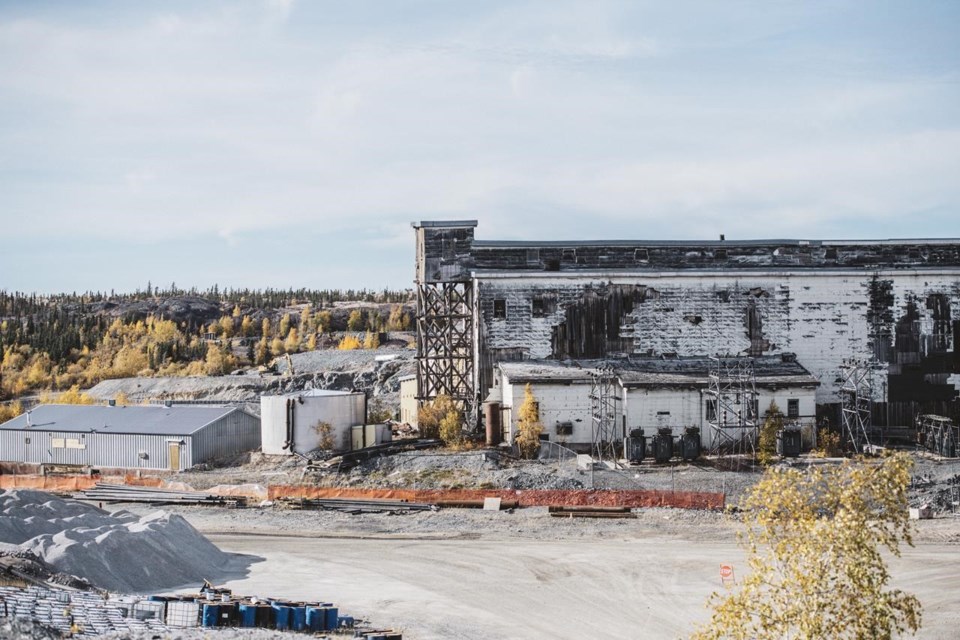YELLOWKNIFE — The scale of the cleanup required at the Giant Mine almost beggars belief.
Eight open mine pits. Six tailings ponds. About 100 buildings, many laced with asbestos. Untold tonnes of rusting scrap. A 900-hectare surface site poisoned with 13.5 million tonnes of arsenic, with a creek flowing through it that drains into Great Slave Lake.
And the kicker — there are 237,000 tonnes of arsenic stored underground in 13 huge, poorly mapped subterranean chambers, sealed off behind crumbling concrete bulkheads and sitting uncovered in huge dunes of highly soluble poison adjacent to the lake.
Removing that arsenic, the preferred solution of many northerners, would require workers to go deep underground into poorly understood environments wearing hazmat suits with separate air supplies. Even if possible, it would be incredibly dangerous.
So the arsenic will be frozen in place with the use of so-called thermosiphons.
A total of 858 thermosiphons, essentially long tubes filled with pressurized carbon dioxide, will be sunk from levelled-off platforms built over the arsenic chambers. The tops of the thermosiphons, which work without a power supply, will be exposed to air and the bottoms will penetrate about 76 metres down.
As heat from the ground warms the carbon dioxide in the bottom of the siphon, the gas slowly rises to the top. Winter air will cool it, condensing it to a liquid. That liquid falls to the bottom of the siphon, where ground heat warms it again.
As its heat is slowly pumped up and dissipated, the ground at the bottom cools and eventually freezes, sealing off the arsenic behind a wall of ice. Arsenic from surface soils and contaminated buildings will also be frozen in place underground.
Thermosiphons are commonly used across the North to protect foundations of buildings that are sunk into permafrost, but they have never been used in quite this way before, said project director Brad Thompson.
"We have kilometres of drilling to do and it's all very precise drilling."
Although thermosiphons won't work in the summer, Yellowknife winters are expected to be long and cold enough for the process to work, even as the climate changes.
It will have to. The thermosiphons will have to work in perpetuity, or until a safe method is found to bring the arsenic to the surface.
A test of the system conducted in 2011 found that thermosiphons cooled one of the mine's smaller chambers to about -5 C within two years.
Nor are the thermosiphons the only part of the cleanup that will have to work long-term. Water from the mine's depths will have to be pumped to the surface and treated in perpetuity.
About 700,000 cubic metres of water a year are already being treated. A new plant is being built, which will treat water to drinking standards before it's released into Great Slave Lake.
Under the mine siteis a network of tunnels and chambers, many of which make the surface prone to sinking.
"There are a lot of voids," Thompson said. "We're filling those holes with cement backfill."
By the end of 2024, those holes will have absorbed about 400,000 cubic metres of backfill.
A landfill the size of a small city block is also being built on the site to take in non-hazardous waste.
The mine's remaining townsite, a few dozen company houses, will be demolished and the asbestos-contaminated materials shipped to a disposal facility.
Water from the tailings ponds will be drained and treated. Open pits will be filled in with clean waste rock.
Although the remediation plan dates to 2014, work couldn't begin until the project received a licence from northern regulators, which was granted in 2019. Work was again delayed by the COVID-19 pandemic and crews didn't get on the site until last summer.
The original timeline for the project has been extended to 2038 from 2031. Its original budget, set in 2014, was about $940 million.
This report by The Canadian Press was first published Sept. 28, 2022.
— Follow Bob Weber on Twitter at @row1960
Bob Weber, The Canadian Press



